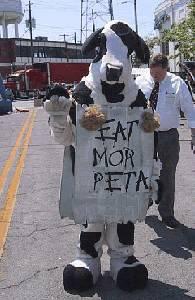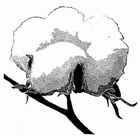Don't tell the boss
The soil around here is of a type called grey cracking clay vertisols, it's also called self-mulching black soil. This is because it forms a crust when it gets wet, retaining the moisture underneath. Because of this, it was only yesterday that we could get the tractor back in the paddock after the rain ten days earlier. It was probably still a little damp, but I'm pretty good so I made it work anyway.
I did have a bit of a problem on one run, however. About two hundred metres from the tail drain, heading up the paddock, a hare* appeared in the furrow my right hand wheels were running in (we have rabbits and hares running around here. It's pretty hard to tell the difference sometimes, but there are ways; their ears are different sizes [don't remember which is bigger], hares have larger hindquarters and the way I tell. Hares run with their tale down and rabbits run with their tale up, so that for every hop they take there is a flash of white fur on their bum.).
It was a young one, about the size of your hand. It was pretty amusing for a while, the little bugger was running his widdle legs off trying to stay in front of the tractor, when all he had to do was turn right and hop four metres to safety. No wonder I never see any hares at my MENSA meetings. It threatened to get ugly when the little fella started tiring, though. I felt sorry for him; he was trying so hard, so I knocked it back a gear, then another one. Finally - Cry Freedom! The head-ditch and sanctuary. Up and over one side he went, then up and over the other, where he sat on the bank and caught his breath. His sides were heaving like he'd just finished out of a medal at the Olympics. Poor little bugger. He'll probably sire 27,000 kids who'll eat me out of house and home in gratitude.
*Note for foreign visitors: Hares and rabbits are feral animals in Australia. Rabbits in particular almost ruined the grazing industry down here in the period from the twenties to the fifties. Wool was our biggest export earner at this time. Myxomatosis was introduced in the fifties(?), which cut the population back dramatically. Numbers were getting out of control again in the nineties when the calicivirus was released - prematurely, apparently.
I did have a bit of a problem on one run, however. About two hundred metres from the tail drain, heading up the paddock, a hare* appeared in the furrow my right hand wheels were running in (we have rabbits and hares running around here. It's pretty hard to tell the difference sometimes, but there are ways; their ears are different sizes [don't remember which is bigger], hares have larger hindquarters and the way I tell. Hares run with their tale down and rabbits run with their tale up, so that for every hop they take there is a flash of white fur on their bum.).
It was a young one, about the size of your hand. It was pretty amusing for a while, the little bugger was running his widdle legs off trying to stay in front of the tractor, when all he had to do was turn right and hop four metres to safety. No wonder I never see any hares at my MENSA meetings. It threatened to get ugly when the little fella started tiring, though. I felt sorry for him; he was trying so hard, so I knocked it back a gear, then another one. Finally - Cry Freedom! The head-ditch and sanctuary. Up and over one side he went, then up and over the other, where he sat on the bank and caught his breath. His sides were heaving like he'd just finished out of a medal at the Olympics. Poor little bugger. He'll probably sire 27,000 kids who'll eat me out of house and home in gratitude.
*Note for foreign visitors: Hares and rabbits are feral animals in Australia. Rabbits in particular almost ruined the grazing industry down here in the period from the twenties to the fifties. Wool was our biggest export earner at this time. Myxomatosis was introduced in the fifties(?), which cut the population back dramatically. Numbers were getting out of control again in the nineties when the calicivirus was released - prematurely, apparently.




4 Comments:
Hares live above ground and mate for life,rabbits well they do it the other way around.
What..., Rabbits have a life below ground and live for mates?
i was starting to get a crush on you until that last blurb at the end zzzzzz.
Pffft. Everybody's a critic.
Post a Comment
<< Home